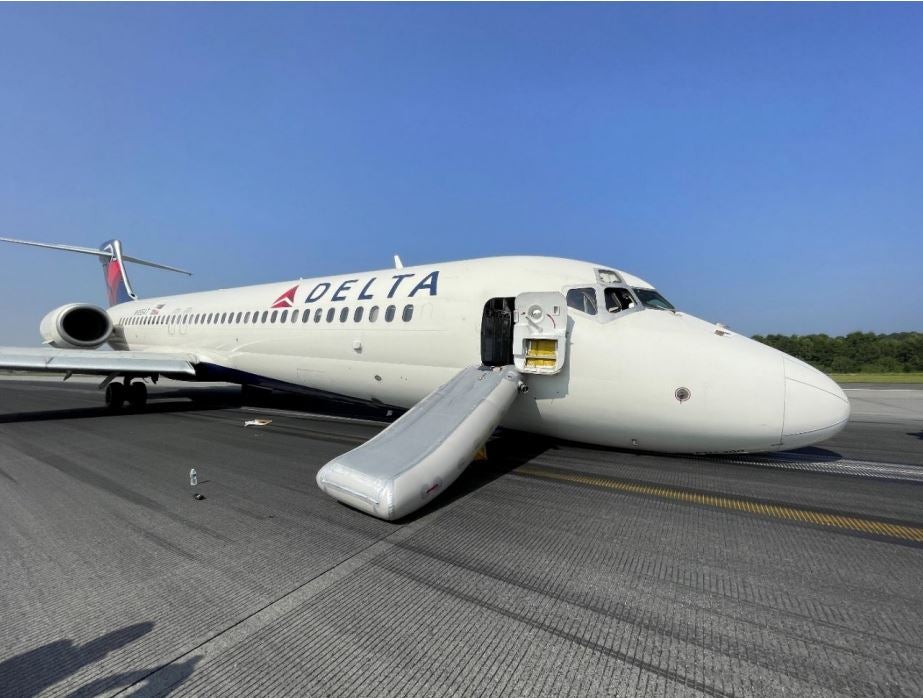Mechanical part failure of a Boeing 717’s nose gear assembly may have prevented its deployment, leading a Delta Air Lines flight to land on its nose last month in Charlotte, according to accident investors.
The June 28 incident occurred at 8:58 a.m. as the crew of the Boeing 717 was preparing for landing at Charlotte Douglas International Airport (KCLT), according to preliminary information from the National Transportation Safety Board (NTSB). The aircraft was about 2,000 feet agl when the first officer lowered the landing gear handle and the nosewheel unsafe condition light illuminated.
“The unsafe condition was confirmed in the configuration page of the electronic instrument system (EIS),” the report said. “A go-around was initiated to troubleshoot and complete the applicable checklists. A manual gear extension was attempted without success.”
The flight crew contacted Delta’s Atlanta flight control via aircraft communication addressing and reporting system (ACARS), and declared an emergency with air traffic control. Conditions were VFR, and the aircraft was cleared for an approach to Runway 36L.
“As the airplane approached 300 feet agl, ATC notified the flight crew that the nose wheel was not visible, and a second go-around was initiated,” NTSB said.
After several more attempts to lower the nosewheel using both electronic and manual landing gear extension procedures, the decision was made to proceed with the landing.
Video captured from inside the aircraft by a passenger noted how smooth the landing was as the airplane touched down approximately 1,400 feet from the runway’s threshold and the nose lowered onto the pavement. The airplane came to a stop near Taxiway W7. Airport fire and rescue sprayed the nose wheel area with water and when it was deemed safe, the passengers were evacuated through the two forward doors.

There were no injuries to the 99 passengers or five flight crew members.
The subsequent inspection of the aircraft nose gear revealed the upper lock link had fractured, which allowed the lower lock link to swing down to a vertical position, restricting the movement of the nose landing gear assembly, NTSB said.
The fractured lock link was sent to the NTSB materials laboratory for examination, and the cockpit voice recorder (CVR), and the flight data recorder (FDR) were sent to the NTSB recorders laboratory for download. The aircraft’s maintenance records have also been quarantined and will be reviewed, NTSB said.
